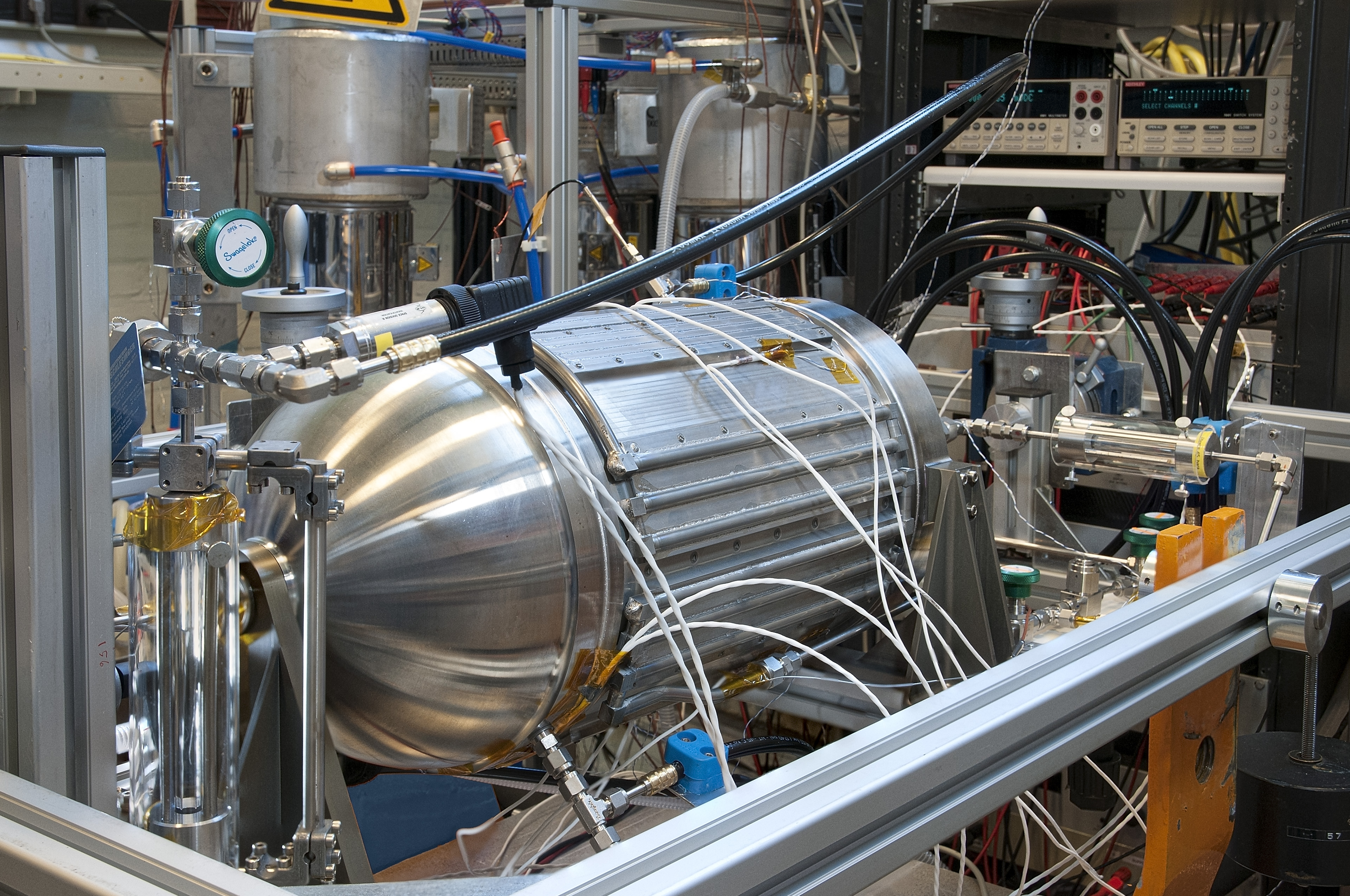-
StatusCompleted
-
Status date2020-06-25
-
Activity Code4D.028
Mechanically Pumped Loops (MPL) transport heat from inside the SpaceCraft (S/C) to the S/C thermal radiators. One of the key components of a MPL is the accumulator. The accumulator has two functions. Firstly it allows for fluid volume variation in the loop during the different satellite functioning modes. Secondly it controls the set- point temperature of the 2Φ- MPL. The set-point of the accumulator prescribes the evaporation temperature of the liquid in the evaporator (pay-load interface).
For terrestrial applications, the accumulator design for pumped loops is straightforward and makes use of gravity. The liquid is located at the bottom and the vapour at the top. In microgravity however, the location of liquid and vapour phase is unknown and special measures must be taken to assure proper operation.
The main objective of the project is to design, develop, manufacture, and test an EM Heat Controlled Accumulator (HCA) for use in 2-phase mechanically pumped loops for space applications.

Picture of the HCA EM Courtesy NLR
The project had two main challenges.The first main challenge was to design a HCA capable of operating in all orientations on ground.
The second main challenge was to demonstrate the chosen design works in micro-gravity conditions.
Although only a few two-phase mechanically pumped loops have been developed for space the HCA design can be compared with a standard bellows accumulator. The main advantage of a HCA over a bellows is that it is 70% more mass effective. Further the HCA contains no moving parts.
The HCA volume is 24 Litre. The heater power is maximised to 250 W for operations during P/L switch-off and to allow for set-point raising. The HCA mass in stainless steel is 32.5 kg. Design updates can reduce this mass to 24.9 kg. For a Titanium version another 35% can be reduced. The design is modular and extendable to larger loops by increasing the axial length, leaving the diameter unchanged.
A larger length has no impact on the HCA overall design and design verifications.
A Heat Controlled Accumulator needs to be temperature controlled. The HCA design has therefore heaters and coolers. The other main design driver was the requirement to be able to operate the HCA in all orientations on-ground. This resulted in a design with parallel internal routing of the inlet tube to allow for ground testing in all orientations.
Heater operation in micro-g conditions is looked after by felt wick to provide liquid supply to the heater zones and avoid vapour heating.
The project concerns the development of an HCA Engineering Model. The project has a classical PDR, CDR, TRR approach in which critical requirements are verified by test with special attention on the verification of the HCA in micro-g conditions by modelling and test.
The project has been completed. An HCA Engineering Model has been designed, developed and tested.





